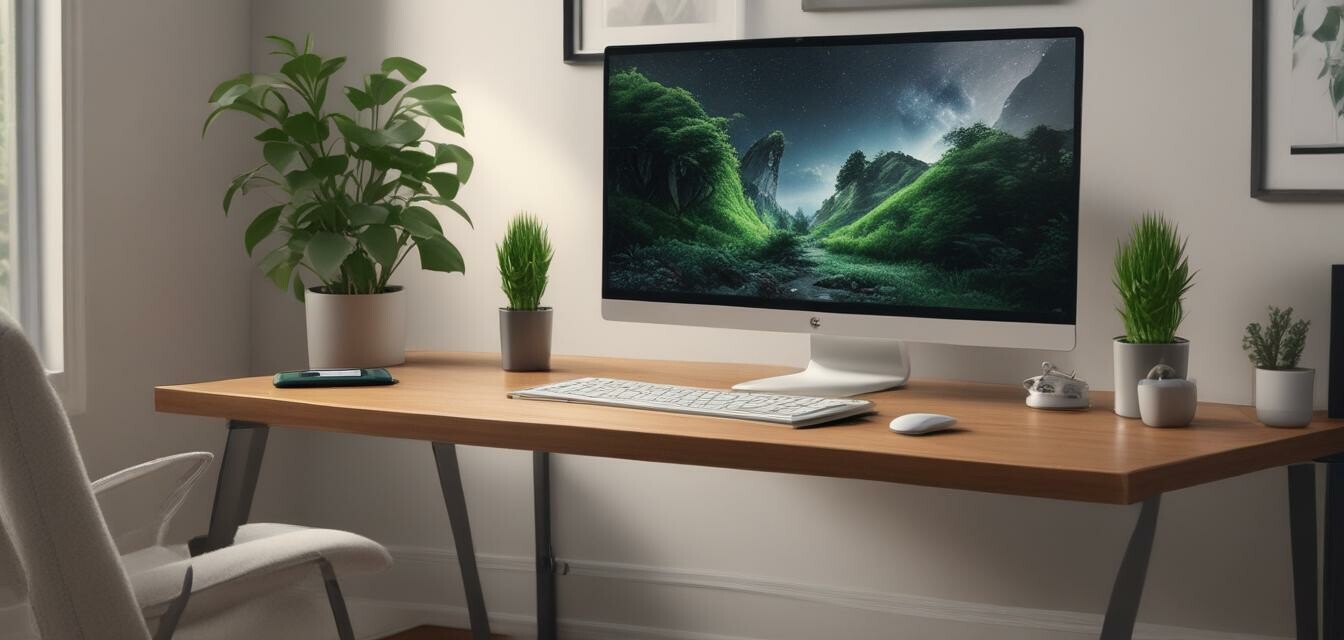
How to choose the right monitor for your workspace
Key takeaways
- Choose the right screen size for your workspace.
- Consider the resolution that best meets your needs.
- Look for features like adjustable stands and eye-care technologies.
- Think about connectivity options for your devices.
- Budget wisely, balancing quality with cost.
When it comes to setting up your home office, selecting the right monitor is crucial. It can affect your productivity, comfort, and even your enjoyment of the workspace. In this guide, we will explore the key features and specifications to consider when picking the perfect monitor for your needs.
Why a quality monitor matters
A good monitor can drastically improve your working experience. It impacts how well you can focus on your tasks, reduces eye strain, and contributes to an efficient workflow, especially during long hours of work. Below are some essential factors to consider while choosing a monitor.
Factors to consider
| Feature | Description | Importance |
|---|---|---|
| Screen size | The diagonal measurement of the monitor's display area. | A larger screen can enhance multitasking and reduce eye strain. |
| Resolution | The number of pixels displayed on the screen, typically described in terms of width x height. | Higher resolutions provide clearer images and improve text readability. |
| Panel type | The technology used in the display (e.g., IPS, TN, VA). | Different panel types offer varying color accuracy and response times. |
| Refresh rate | The number of times the display refreshes per second, measured in Hertz (Hz). | A higher refresh rate can lead to smoother visuals, especially beneficial for gaming or video editing. |
| Connectivity options | Types of ports available (HDMI, DisplayPort, USB-C, etc.). | More connectivity options allow for easier integration with other devices. |
| Ergonomics | Adjustments available (height, tilt, pivot). | Ergonomic features help maintain good posture and comfort during use. |
Understanding display types
Displays come in various technologies, each with its pros and cons. Here’s a quick overview of the most common monitor panel types:
- In-Plane Switching (IPS): Offers better color reproduction and viewing angles but may be more expensive.
- Twisted Nematic (TN): Generally cheaper and provides fast response times but poorer colors and viewing angles.
- Vertical Alignment (VA): Provides deeper blacks and higher contrast but slower response times.
Choosing the right size
The size of the monitor you choose should depend on the space available and your specific needs. Here are some general guidelines:
| Size (Inches) | Recommended Use | Distance from the Monitor |
|---|---|---|
| 24"-27" | General office work and multitasking. | 22"-30" |
| 28"-32" | Graphics design and gaming. | 28"-36" |
| 34" and above | Video editing and immersive gaming. | 3' and above |
Budget considerations
Investing in the right monitor can be costly, but it’s essential to stay within your budget. Consider the following tips when making your decision:
Tips for beginners
- Set a budget range before you start looking.
- Research different brands and read reviews.
- Consider buying during sales events for better deals.
- Don’t forget to factor in potential additional costs like monitor arms and cables.
Conclusion
Choosing the right monitor for your workspace involves considering several important features and specifications. Whether you're working from home, gaming, or engaged in graphic design, the right monitor can significantly enhance your productivity and comfort. Always take your time to assess different options and ensure you make an informed choice that aligns with your needs.
Pros
- Enhanced productivity due to better resolution and screen size.
- Improved ergonomics and reduced strain with adjustable stands.
- Wide variety of features to suit different needs and tasks.
Cons
- Can be expensive, especially for higher-end models.
- Size may be limited by workspace.
- Some types may not be ideal for color-sensitive tasks.
To explore more about home office setups, check out our sections on computer peripherals, docking stations, and multi-monitor setups. These resources can help you create an efficient workspace tailored to your needs.